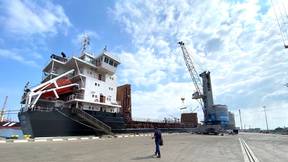Australian Navy Commissions Hobart (II) – One in a Million
Royal Australian Navy will commission the first of three new destroyers today (On 23 September). In continuing our reflective stories of previous ships that have carried the name HMAS Hobart, this is the story of Hobart (II). The second ship to bear the name Hobart was one of three Perth class guided missile destroyers built in the United States for the Royal Australian Navy. She was commissioned at the Boston Navy Yard on 18 December 1965 under the command of Captain Guy Griffiths. Following sea trials and exercises in the United States and Canadian waters, Hobart arrived in her namesake city on 1 September 1966. She berthed in her home-port of Sydney for the first time on 7 September 1966.
Navy Welcomes Fourth Ship Named in Honor of Rear Adm. William T. Sampson
The fourth ship in the Navy's history named in honor of Rear Adm. William T. Sampson, USS Sampson (DDG 102), was commissioned Nov. 3 at Massport's Black Falcon Cruise Ship Terminal with more than a thousand spectators in attendance braving the wind and rain. The new Arleigh Burke class guided-missile destroyer, built at the Bath Iron Works in Maine, was the first ship in five years commissioned in Boston. Sampson's last assignment in the Navy was commander of the Boston Navy Yard, and all four destroyers named in his honor have been commissioned in this historic harbor. Sampson's commissioning officially began with the traditional 19-gun salute by the oldest field artillery regiment in the nation, 1-101st Field Artillery Battalion, Massachusetts Army National Guard.
Navy Christens New Guided-Missile Destroyer
The latest Arleigh Burke-class guided-missile destroyer, Sampson (DDG 102), will be christened Sept. 16 during a ceremony at Bath Iron Works, Bath, Maine. The ship is named in honor of Rear Adm. William Thomas Sampson (1840-1902), a naval hero in the Spanish-American War. After graduating first in his class at the U.S. Naval Academy in 1861, Sampson served in the Civil War, during which he survived a mine explosion in 1865. When the United States declared war against Spain following the sinking of the battleship Maine, Sampson assumed command of the U.S. North Atlantic Squadron with the rank of rear admiral. Sailing from Key West, Fla., in 1898, aboard USS New York (CA 2), his squadron established a blockade on the Spanish Fleet in the harbor of Santiago, Cuba.








